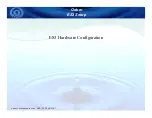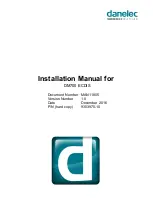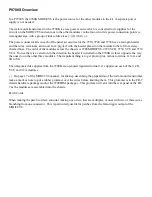
9
Guidelines for Sample Preparation,
Continued
Total Sample
Volume
For best results, avoid loading less than 5 µL of sample in wells, and maintain a
uniform loading volume. If you do not have enough samples to load all the wells
of the gel, load an equal volume of deionized water into any empty wells.
E-PAGE
™
Gel Type
Recommended Volume
E-PAGE
™
96
6% Gel
15 µL
E-PAGE
™
48
8% Gel
10 µL
We recommend loading 5–10 µL of deionized water into all wells of the
E-PAGE
™
Gel prior to loading samples or molecular weight markers.
Amount of Protein
Load up to 20 µg of protein per well of the E-PAGE
™
Gel. The amount of
protein required depends on the staining or western detection method used for
visualization. If you are unsure of how much protein to use, test a range of
concentrations to determine the optimal concentration for your sample.
Note:
To ensure a proper LDS (lithium dodecyl sulfate from Loading Buffer 1)
to protein ratio, limit sample protein or lipid (from the sample) amount to
2 µg/µL of the final sample volume. Excess protein will cause poor resolution.
High Salt or
Detergent
Samples
Samples containing high salt or detergents result in loss of resolution on
E-PAGE
™
Gels. Dilute the samples such that the final concentration of the salt
or detergent in the sample is as described below. NT= not tested.
Detergent or Salt
Final Concentration for
E-PAGE
™
48
Final Concentration for
E-PAGE
96
Triton
®
X-100
<0.3%
<0.5%
Tween
®
20
<0.3%
<0.5%
CHAPS
<0.3%
NT
NP-40
<0.3%
NT
RIPA
<0.25X
NT
SDS
<2% (already in loading
buffer)
<4%
Tris
<300 mM
<200 mM
NaCl
<300 mM
<250 mM
Ammonium
sulfate
<100 mM
NT
Sodium acetate
<200 mM
NT
EDTA
<20 mM
NT
MES
Not recommended
NT
DTT, Glycine,
Urea, Imidazole
No effect seen up to 500 mM
NT
Summary of Contents for E-PAGE Gels
Page 77: ...73...














































